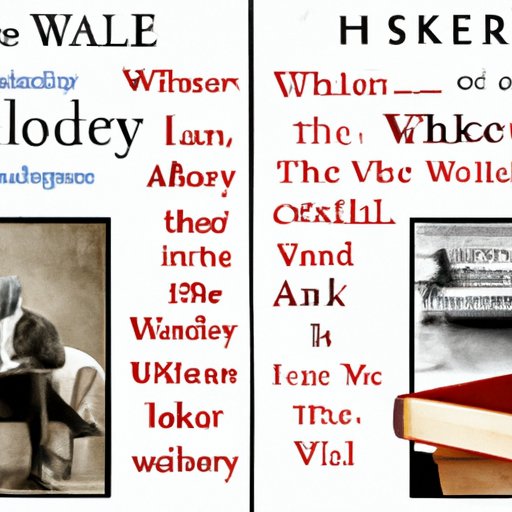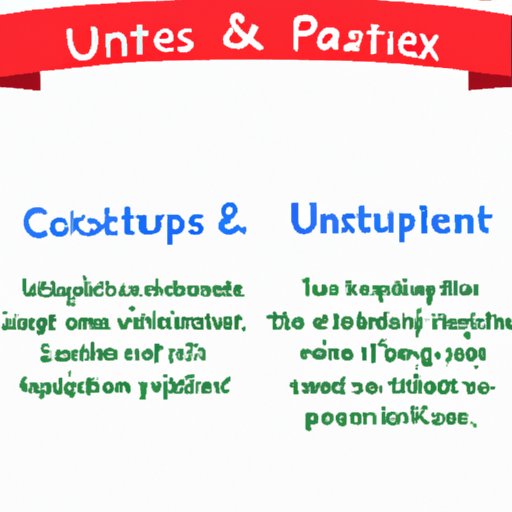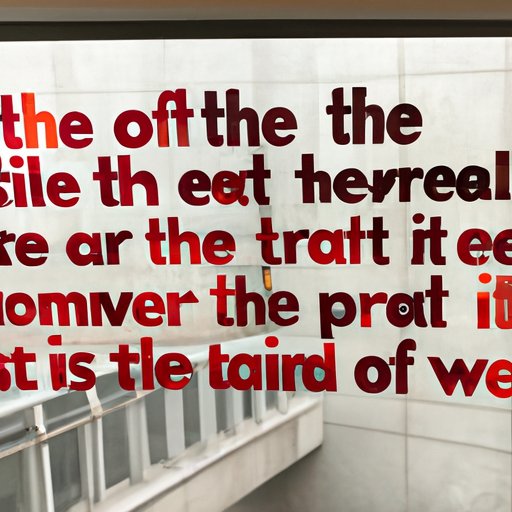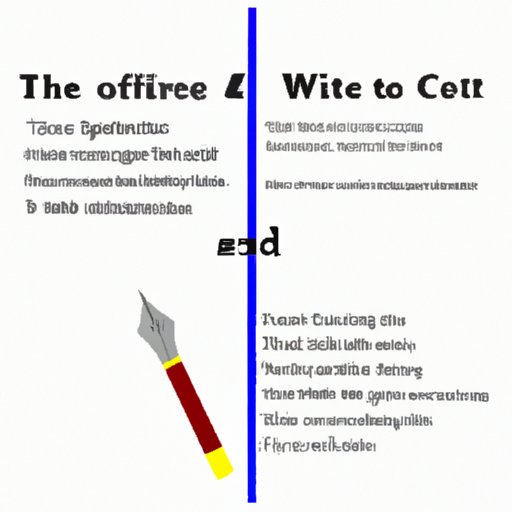Introduction
Juxtaposition is a literary technique used by authors to create contrast between two people, ideas, objects, or settings. By placing these elements side by side, authors can draw attention to their similarities and differences, allowing readers to make deeper connections between them. In this article, we will look at what is juxtaposition in literature, explore some examples of famous literary works that use this technique, and discuss how to use juxtaposition effectively in writing.

Examples of Juxtaposition in Famous Literary Works
One of the most famous examples of juxtaposition in literature is found in William Shakespeare’s Romeo and Juliet. In the play, Romeo and Juliet are two star-crossed lovers from rival families. By placing these two characters side by side, Shakespeare draws attention to their differences—they come from opposing families and have different outlooks on life. This contrast creates tension and conflict, which drives the plot forward.
Another example of juxtaposition in literature can be seen in Harper Lee’s To Kill a Mockingbird. In the novel, Scout and Jem Finch are siblings growing up in a small town in the 1930s. Throughout the story, Scout and Jem are placed side by side to illustrate their differences—Scout is curious and adventurous, while Jem is more serious and cautious. This juxtaposition allows readers to better understand the dynamics between the two characters and their relationship with each other.
Finally, in George Orwell’s Animal Farm, the animals of the farm are placed side by side with the humans who own it. By contrasting the animals and humans, Orwell highlights the injustices of class and power. This juxtaposition allows readers to make connections between the characters’ actions and the consequences of their decisions.

How to Use Juxtaposition Effectively in Writing
Now that we’ve explored some examples of juxtaposition in literature, let’s take a look at how you can use this technique effectively in your own writing. The first step is to identify opposites that you want to place side by side. These could be characters, settings, objects, or ideas. Once you’ve identified two opposites, you need to decide on the right setting to place them in. This setting should highlight their differences and create tension between them.
Once you’ve chosen the right setting, it’s time to start writing. You can use contrasts to create tension between the two elements. For example, if you’re writing about two characters, you can emphasize their differences in terms of personality, values, or beliefs. If you’re writing about two settings, you can describe them in starkly contrasting terms—one could be dark and oppressive, while the other could be light and airy.

The Power of Juxtaposition in Crafting Engaging Stories
The power of juxtaposition lies in its ability to create conflict. By placing two opposing elements side by side, you can establish tension and create an engaging story. This tension can help reveal character motivations, develop plot points, and move the story forward.
For example, if you’re writing a story about a character who is struggling to choose between two paths, you can use juxtaposition to show how these paths differ from one another. By highlighting the pros and cons of each path, you can create tension and force your protagonist to make a difficult decision.
Exploring the Benefits of Juxtaposition for Character Development
In addition to creating conflict, juxtaposition can also be used to enhance character development. By placing characters side by side, you can emphasize their similarities and differences, allowing readers to gain a deeper understanding of who they are. This can add emotional depth to your story and make your characters seem more real.
Juxtaposition can also be used to showcase relationships between characters. By highlighting the similarities between two characters, you can show how they connect with each other. On the other hand, by emphasizing their differences, you can illustrate how they clash and create tension. This can help readers gain insight into the dynamics of the relationships between your characters.
Finally, juxtaposition can be used to showcase character growth. By placing a character side by side with their past self, you can demonstrate how they have changed over time. This can be a powerful way to show a character’s evolution and illustrate how they have grown.
Conclusion
In conclusion, juxtaposition is a powerful literary technique that can be used to create conflict, reveal character motivations, and develop plot points. It can also be used to enhance character development, showcasing emotional depth, relationships, and growth. By placing two opposing elements side by side, authors can draw attention to their similarities and differences, allowing readers to make deeper connections between them.
So, the next time you’re writing a story, consider using juxtaposition to create tension and craft an engaging narrative. By exploring the power of opposites, you can create a story that resonates with readers and leaves a lasting impression.
(Note: Is this article not meeting your expectations? Do you have knowledge or insights to share? Unlock new opportunities and expand your reach by joining our authors team. Click Registration to join us and share your expertise with our readers.)
